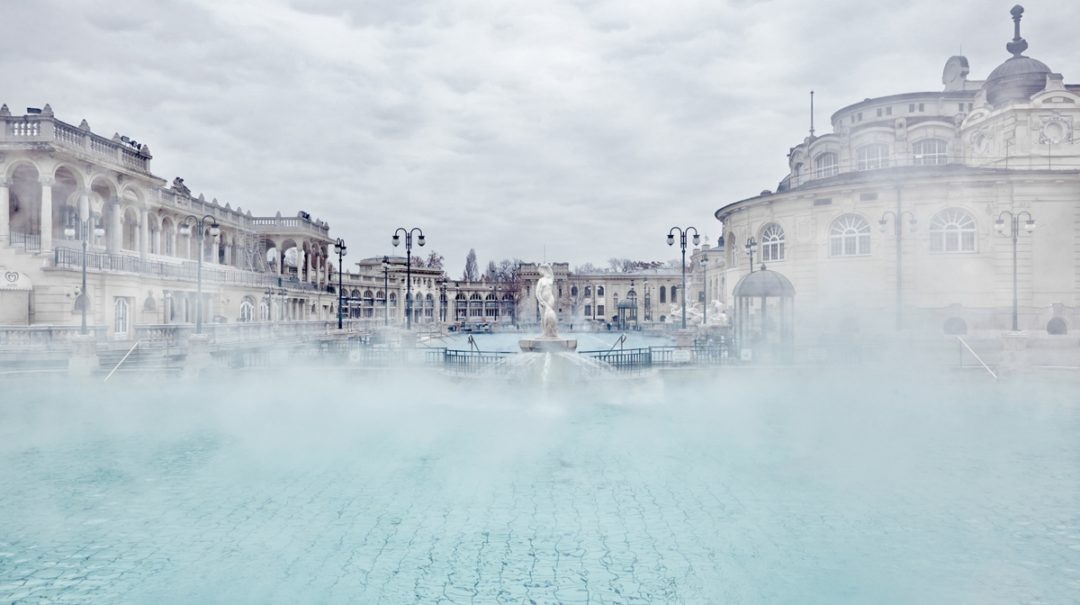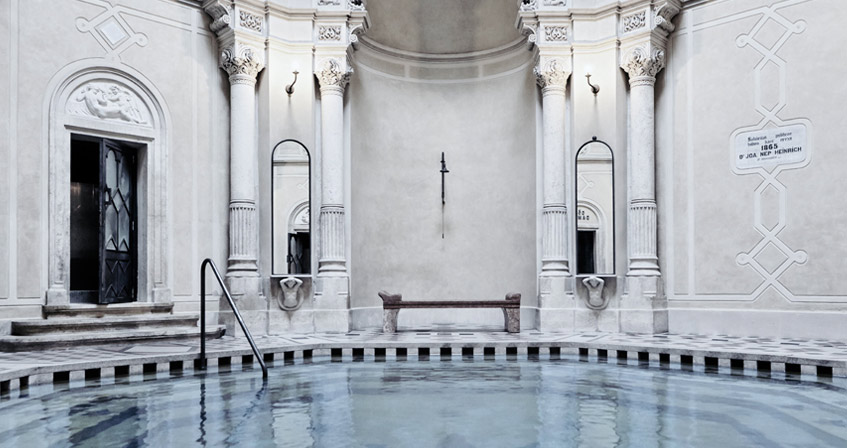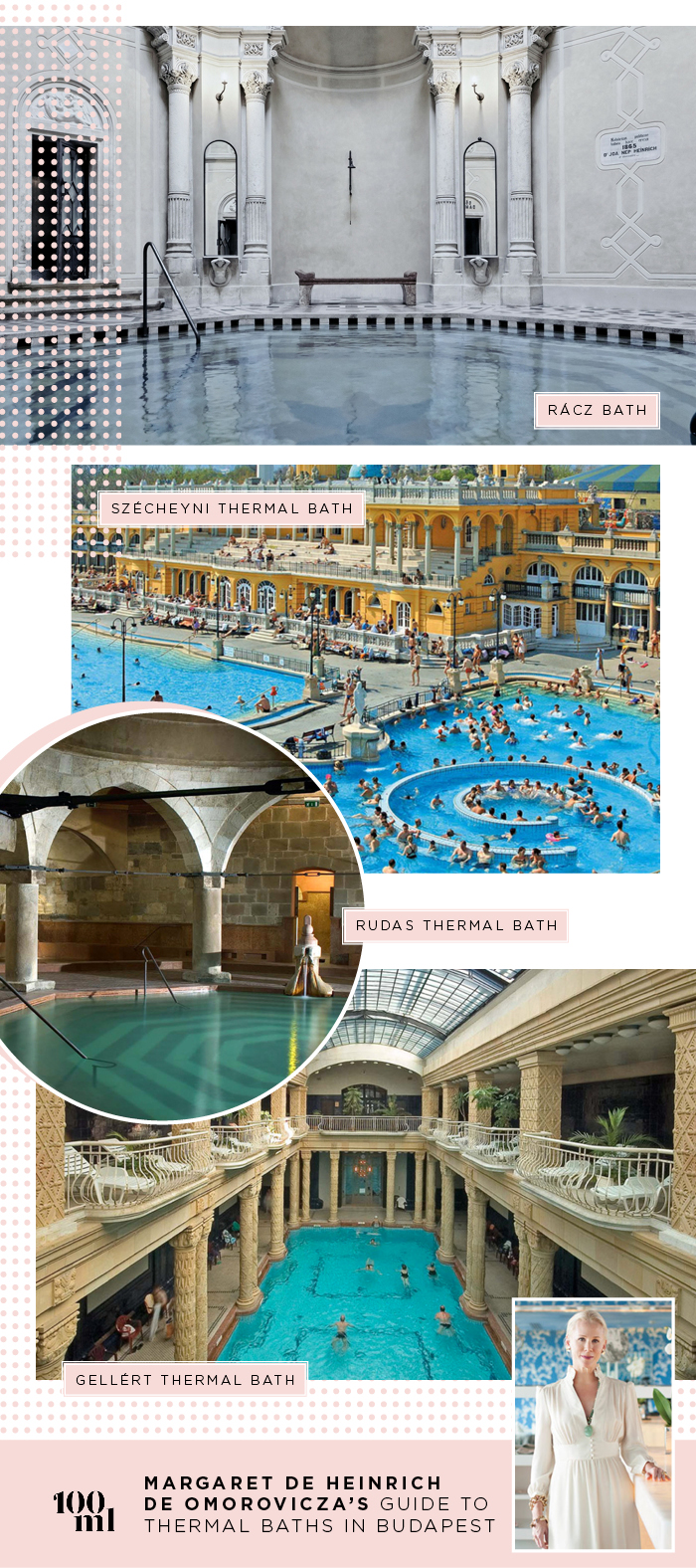
When in Hungary, a visit to a thermal bath is a must in the same way that that a stop at the Blue Lagoon is a required experience in Iceland. And there’s no better person to help explain the wonders of thermal baths than Margaret de Heinrich de Omorovicza, the co-founder of Omorovicza, a skincare brand that was inspired by the thermal waters in Hungary.
The first thing to know is that the city of Budapest in Hungary – renowned for its thermal baths – is referred to as the city of spas for having more thermal springs than any other capital in the world. “Budapest is a geological curiosity because the earth’s crust is thinner there than any other place in the world,” explains Margaret, a former U.S. diplomat whose ambassadorial duties took her to Hungary, where she met her future husband and brand co-founder, Stephen de Heinrich de Omorovicza. “Because of that, the waters are able to rise closer to the surface, the heat penetration from the sun is greater and the unusually high concentration of minerals are able to be absorbed more.” Omorovicza tapped into the 2,000-year-old, mineral-rich spring water to create a range of skincare essentials like the Thermal Cleansing Balm and Ultramoor Mud Mask. No stranger to thermal baths in Budapest, Margaret shares her know-how.
The ritual of thermal baths
“One of the biggest surprises I found when diving into these thermal baths was the fact that it was so much a part of people’s daily lives. I always tried to get there before work – usually before 7 in the morning – but however hard I tried to be the first in line, I never was. There was always a line around the corner with people of all ages and from every walk of life. Some were doing it for medicinal reasons, others probably for stress and anxiety. The retirees in particular would be in there every day with their little plastic box of chess pieces and they would spend hours there playing chess and relaxing in the water. My Hungarian friends explained how this was a normal as going to play a game of tennis or going to the swimming pool. It was just something their parents had done and their parents’ parents and clearly, they were all benefiting from it. They go because they are believers.”
First thermal bath experience
“I had lived in Hungary for quite a while before I went to visit a bath. I went with [my husband Stephen] and we got in the water and I remember him telling me the history. I had such a positive experience. One, I found it enchanting. I found it so distinctly different from any experience of beauty I had in North America. But more importantly, for someone like myself who had experienced severe skin issues my whole life, after I got out and the water had evaporated and minerals were left, I had never experienced such a positive change to my skin. And that is what drove my enthusiasm. There is a great sense of health and wellbeing in these waters. I always say that 20 to 30 minutes in these baths and you feel like you’ve run 10 miles. It’s just a wonderful sensation.”

How they work
“You walk in and you immediately go to a very traditional booth where are there typically two windows serving the lines and you buy your ticket. With your ticket, you also get an armband and a locker. By paying a little extra, you can also get access to a changing room. After you change and get yourself together, you head to one of the baths. Typically, these places usually have three to 12 baths to choose from. They are often different temperatures from very cold to hot. Once you choose your bath, you enter and you’re just left alone to spend the time that you need. What’s also great is that there is a whole team of people that can give you massages, facials, exfoliation and that is definitely part of the experience. Once you’re done, you just shower and leave.”
Thermal baths to visit in Budapest
“The most beautiful, which is not open to the public is the Rácz because it’s just so visual. You’ve got the Rudas, which is more of a Turkish hammam and also a bath. And then you’ve got the Gellert, which is beautiful. There’s also the Szecheyni, which is more of an outdoor bath.”


